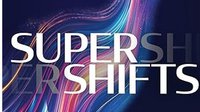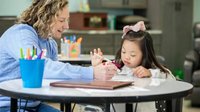When I joined Jacksonville Lighthouse Charter School two years ago it was an F-rated school. Only about 10 percent of students were reading at grade level (across all grade levels), so needless to say one of our biggest initiatives was to improve those literacy rates. In fact, we came up with the theme “PLAY,” which stands for Prioritize Literacy and Achievement Year-Round.
As a starting point, our onsite literacy specialist partnered with a local agency (APSRC) that provides academic support. We had a core, state-approved reading curriculum, but we wanted to supplement that with a strong literacy platform.
One of our kindergarten teachers had used a literacy platform at another school and saw it work in those environments. After evaluating other options on the market, our curriculum instruction team made the final decision to go with it about three years ago.
At the time, roughly 70 percent of our staff were new. There was a lot going on and, as a result, we didn’t dive into the new literacy platform as quickly as we should have. The underlying mission of improving literacy didn’t waiver, so we revamped our approach and enlisted that kindergarten teacher to serve as a liaison between our school and our software partner. That extra push paid off and we started to see the positive results almost immediately.
6 Reasons to Engage a Modern Literacy Platform
The benefits of using a robust, science of reading-backed (scientifically-based research that informs how students learn to read) literacy platform go well beyond just boosting individual students’ reading scores. The technology also helps us:
- Keep up with state standards. Reading scores are public in Arkansas, and they’d been consistently decreasing until a few years ago, when the science of reading became a much bigger focus. About 18 months ago every elementary teacher had to be certified in the science of reading. This paired perfectly with our supplemental literacy program, which emphasizes the phonic skills and the rules and how they’re taught.
- Providing differentiated instruction. We have about two hours allocated to reading in our daily schedule. We’re using our literacy platform to differentiate that instruction and ensure that 1) students who need additional support are given the opportunity to slow down and dig in deeper to gain mastery, and 2) those who complete lessons successfully can work ahead. Students who are behind can still practice skills in the program and also have grade-level exposure via a whole group lesson.
- Celebrate student successes. One of our teachers gives out cupcakes every time a student levels up or gets a certificate. Others stop everything that they're doing and hold a big celebration, with everyone clapping and cheering. They've built this excitement around leveling up which, in turn, gets even students excited. It does create more student ownership because the students get excited to get into the program and level up.
- Provide intervention as needed. Every good platform needs both an intervention component and an enrichment component, and they both have to be meaningful and aligned with the science of reading. They also have to align with state standards, skills and other variables. All of these pieces have to fit together and if the bottom percentile isn’t improving, teachers need the time and space to be able to conduct interventions. Our platform supports this and ensures that no student is overlooked.
- Get parents involved. One of our first-grade teachers prints off the skills the students need to spend the most time on and sends that information home for parents. She also holds conferences with parents and sends weekly binders home with the students. This not only helps get parents involved, but it also supports the comprehensive and proactive approach to student literacy development that our school is focused on.
- Meet students where they are. Our literacy platform ensures that students are learning at their level and they’re working with appropriate content. Whether it's a fourth grader who is at a kindergarten reading level, or a fourth grader working at the seventh-grade level, they get the skills they need to be able to keep learning and improving.
Successfully Emerging from a Literacy Slump
In just two years, Jacksonville Lighthouse Elementary went from 10 percent of students reading at grade-level to a whopping 40 percent. The numbers climb according to grade level with the percentages have cumulatively increased across all grades.
The charter district’s goal is stunning: they want 70 percent of students to be on grade-level in 2025.
It’s a lofty goal and we’re going chunk by chunk. I set this goal based on K-2 tests in 2022 ( we were getting from 10 percent to 45 percent of students on grade level). Last year, 30 percent of our K-2 students achieved grade level reading skills. Now, as of mid-year, our school is trending at 40-45 percent of K-2 students on grade level - very close to achieving my initial goal.
I’m most proud of our kindergarten students. 84 percent of kindergarten students are scoring above the 40th percentile. In prior years, that number was only 40 percent above.
Our literacy performance has contributed to the confidence, excitement and overall culture of our school. Across our whole district, our staff retention is around 90-95 percent this year. I've been in this district for seven years, and I’ve never seen it anywhere near that high. Many teachers get licensed, go to a public school, stay for a short time, and then they get a better offer somewhere else, but not here. They are staying and making a huge impact on our students with the help of our supplemental program.
The literacy program fits perfectly into our school’s collaborative learning model. We've started to see reading scores go up, and now we have platforms and programs in place that we're familiar with. And while we haven’t received a state-awarded letter grade since changing and improving our systems, the average state growth score is now 80 (versus 75 just three years ago). I expect this number will continue to improve as we all embrace the science of reading and the technology platforms that support it.
About the author
John Osborn is principal at Jacksonville Lighthouse Charter School in Jacksonville, Ark.











